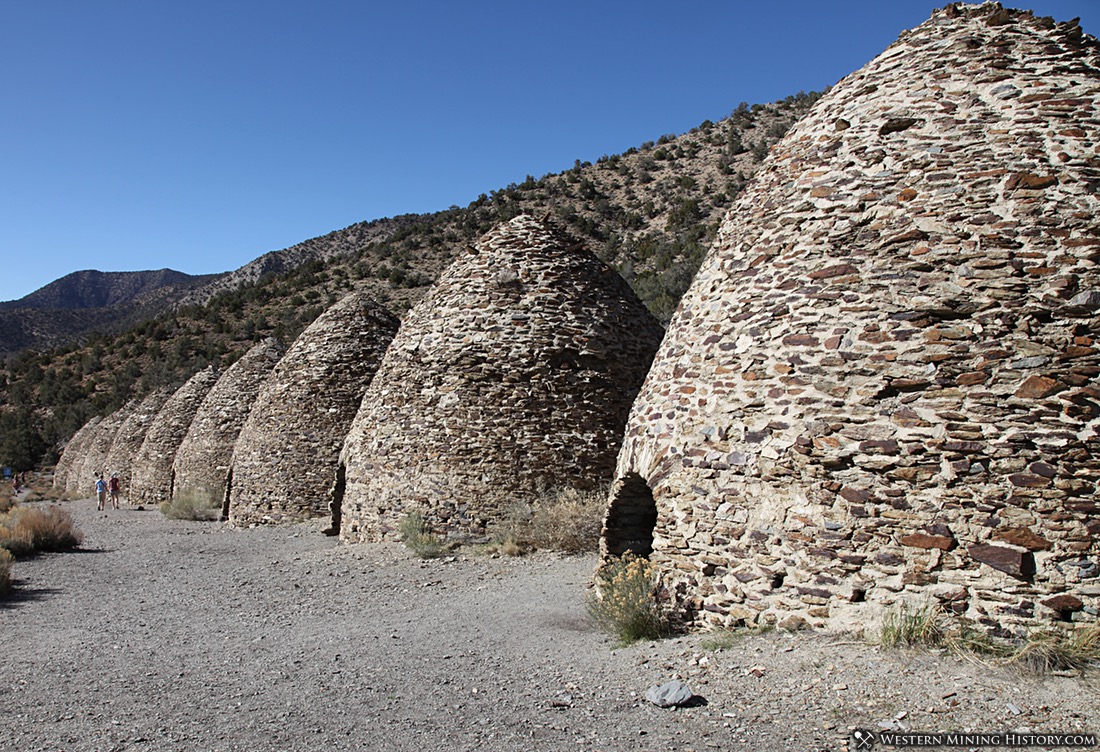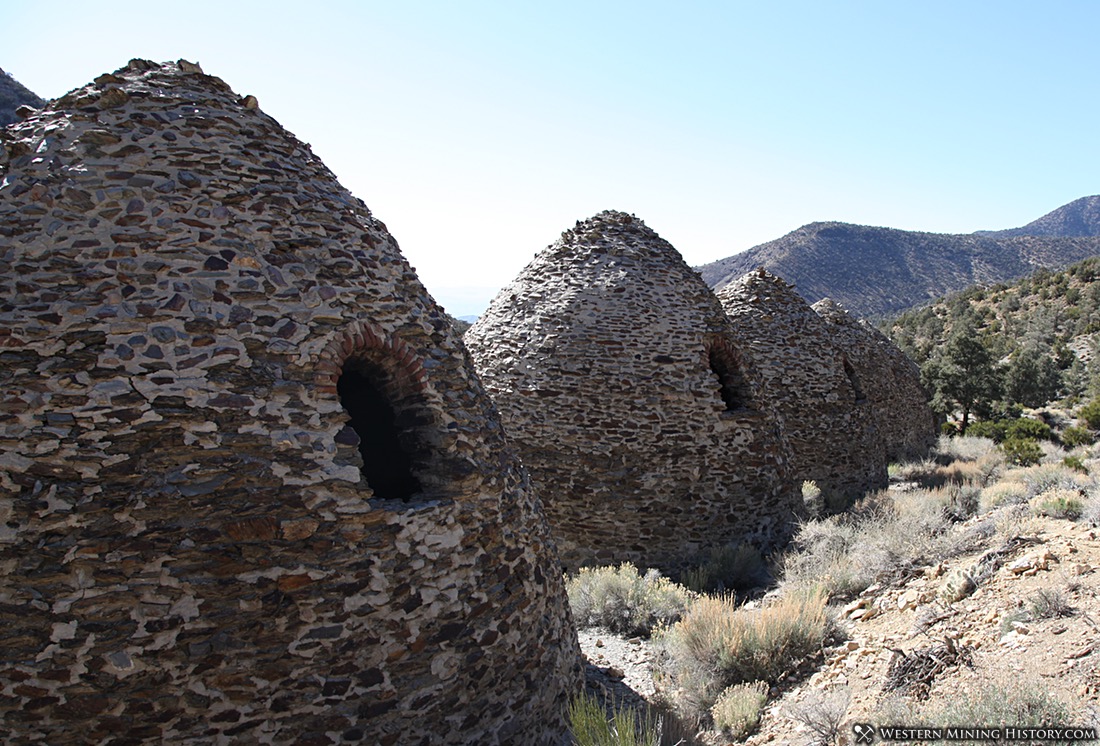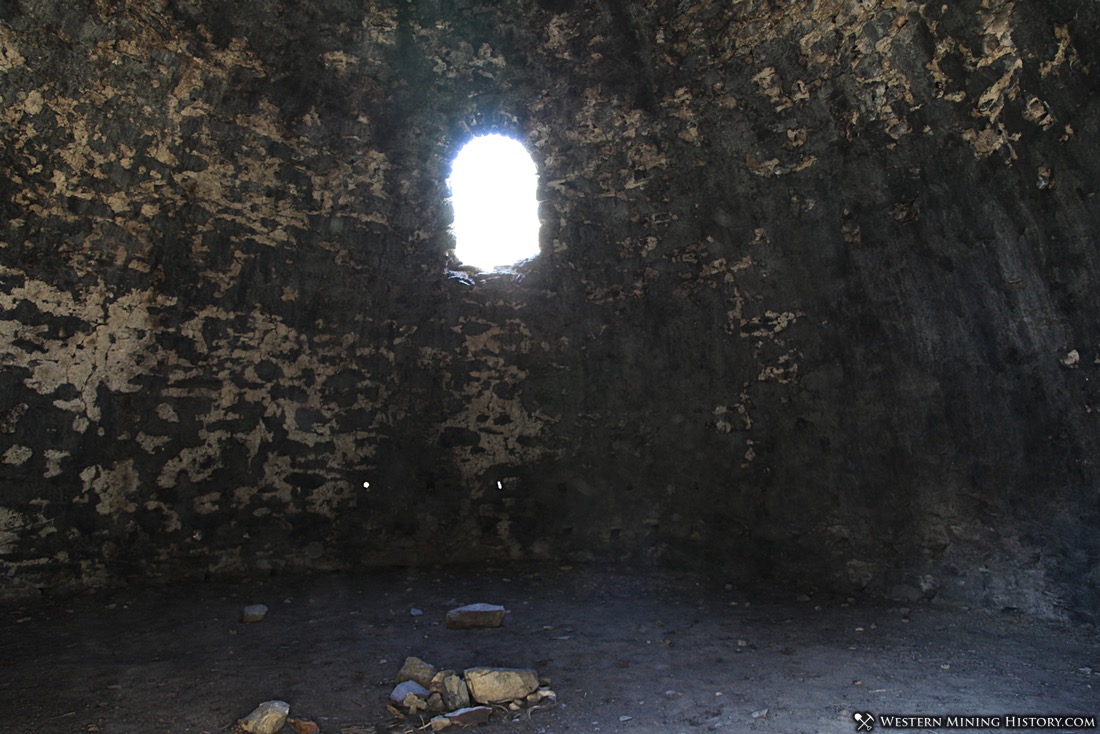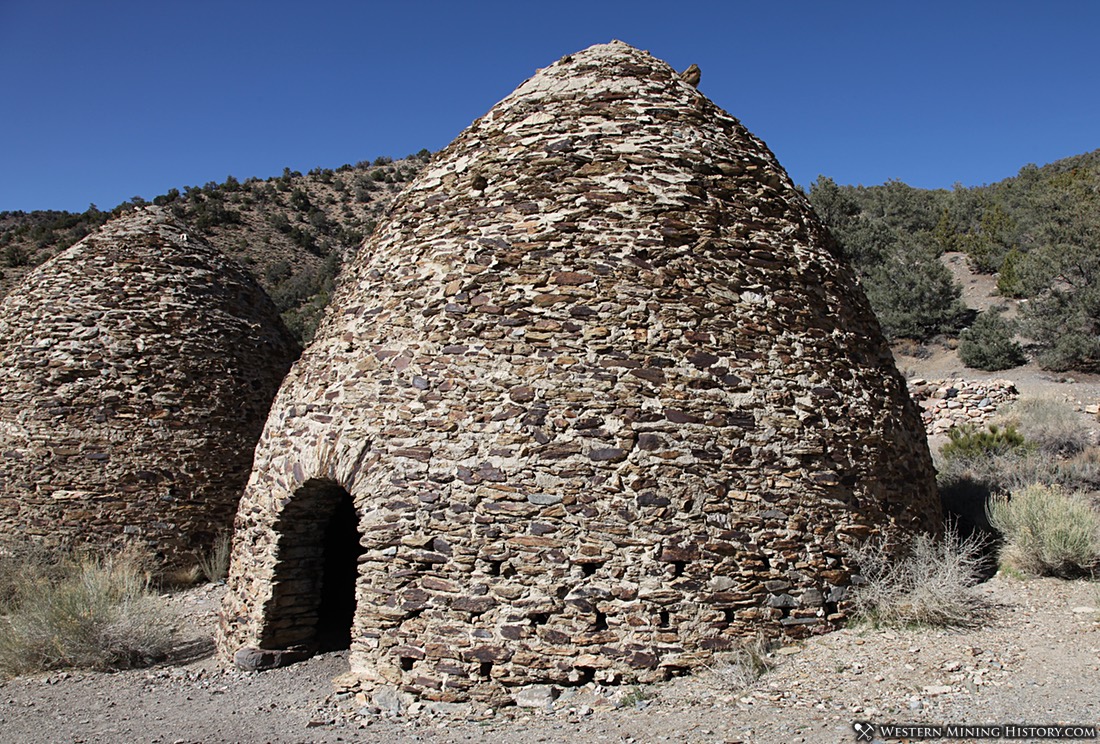The Wildrose Charcoal Kilns, built in 1877, are one of the best preserved and largest examples of historic charcoal kilns in the West. The kilns are located in the western part of Death Valley National Park, in Wildrose Canyon. This part of the park is an excellent destination for camping and hiking so if you are planning on visiting the kilns, you may want to spend a day or two exploring the area.

Wildrose Charcoal Kilns
Charcoal kilns were used extensively in mining districts of the West to provide fuel for mills and smelters. Remote mining districts were often too distant from supply lines to have coal shipped in, so charcoal produced from local trees was used instead.
Each kiln would be loaded with as much as 35 cords of wood and then lighted. Air flow was limited by blocking the vents located near the base of the kilns and the wood was allowed to slowly burn for a week or more until it was reduced to charcoal. It would then take another five days for the charcoal to cool before it could be removed from the kiln.
Charcoal was desirable because it burned hotter and slower than wood, and was more suitable to power boilers and for use in smelters.

The Wildrose Charcoal Kilns were built in 1877 to provide fuel for the Modock (or Modoc) mine smelter located roughly 25 miles to the west. It is interesting to note that the mine was partly owned by the famous George Hearst, although this was not a particularly productive venture compared to Hearst’s other investments so it is not likely he took much personal interest in it.

The kilns operated for less than three years. The reason for the closure is likely a combination of poor economics (the charcoal had to be transported up to 25 miles by wagon over difficult and primitive roads) and the fact that the kiln’s voracious appetite for wood quickly depleted the sparse pinyon forests for miles around the site.
The Wildrose charcoal kilns are incredibly well preserved due to their remote location and their protected status withing the national park. Incredibly, the inside of the kilns still smell of creosote over 130 years after the last time the kilns were fired.
Getting to the Wildrose Charcoal Kilns
The Wildrose Charcoal Kilns are located within the boundaries of Death Valley National park in Wildrose Canyon, on Emigrant Canyon Road, 28 miles from Highway 190. The site is a 1.5 hour drive from the Furnace Creek Visitor Center.
Emigrant Canyon road turns into Charcoal Kilns Road and is gravel for the last two miles to the kilns, but is generally suitable for most cars. The road past the kilns is much rougher, is recommended for high-clearance 4wd vehicles, and is subject to seasonal closures.

Hiking and Camping
Wildrose Canyon is is at much higher elevation than other parts of Death Calley and is a great place for camping and hiking when other parts of the park are too hot.
There are three campgrounds in Wildrose Canyon. The first is Wildrose and is accessible by paved road, and can be full so plan ahead and try to arrive early.
The other two campgrounds, Thorndike and Mahogany Flat, are on Charcoal Kilns Road above the kilns, and are accessible by high-clearance vehicle only. These campgrounds are much less likely to be busy due to the difficult road. During my April, 2018 trip to the area I stayed at Mahogany Flat and only three of the ten sites were occupied.
The Wildrose Peak trail head is located at the charcoal kilns and is accessible to most vehicles. Telescope Peak trail head is located at Mahogany Flat campground and is accessible by high-clearance 4wd only.